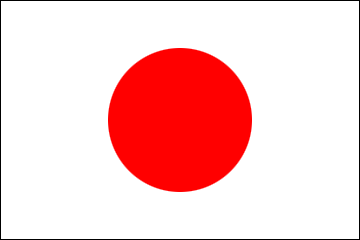Through the Eyes of the former Consul General Yamada (June, 2017 - July, 2020)
2019/12/19

Trip to Walla Walla Wine Country
When welcoming guests for a meal, delicious alcohol is a must-have. For the meals we host at the Official Residence, we toast with Japanese sake, and pair red and white Washington wines with dinner. The central and eastern regions of Washington have wide expanses of land well-suited for winemaking, and have made the state the second biggest wine producer in the country, after California. These areas not only offer ample sunshine, low nighttime temperatures, limited precipitation, and ideal soil conditions for winemaking, but are also home to higher education institutions working passionately on wine production research and development. Because of this, Washington State has the distinction of producing a high percentage of highly rated wines. While in 2000 there were about 100 wineries in the state, there are now over 1,000, producing $2.4 billion in sales every year. Over this same period, the total land area used for wine grape cultivation grew from 24,000 acres (approx. 9700ha) to 59,000 acres (approx. 24000ha).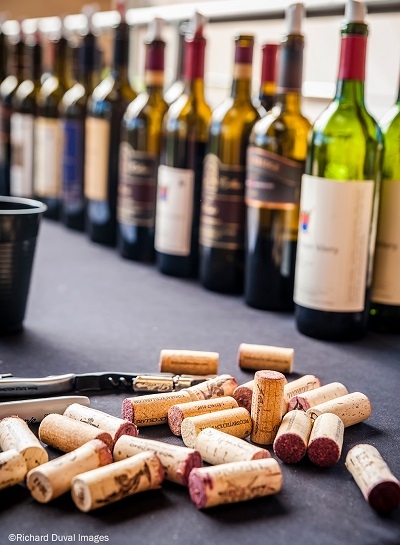 Wine bottles with corks Photo Credit: WWVWA - Richard Duval Images (https://www.wallawallawine.com/media-kit/) |
Walla Walla is one of the most influential wine producing areas in the state. I heard the city would begin selling this year’s wines from November 1 during its annual event, Fall Release Weekend (https://www.wallawallawine.com/event/fall-release/). Andrew Crowder, who until spring of this year worked at the Dept. of Commerce and is now living in Kyoto, had introduced me to Cheryl Hansen, Director of International Programs at Walla Walla Community College, and it was she who told me of the opening date for wine selling in Washington. Eager to have the chance to taste freshly made wines, I brought Chef Masuko from the Official Residence with me and set out on the 4.5-hour drive.
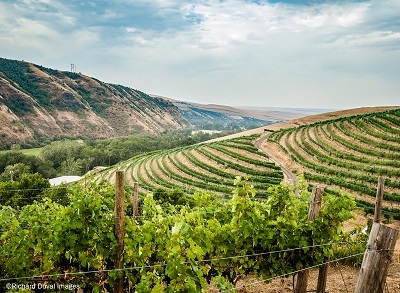 Elevation Vineyard Photo Credit: WWVWA - Richard Duval Images (https://www.wallawallawine.com/media-kit/) |
Winemaking in Walla Walla developed in tandem with the efforts of local higher education institutes in providing personnel training, and research and development. Walla Walla Community College offers a two-year program in wine production. According to Tim Donahue, the college’s Director of Winemaking, students in the wine program have all earned previous degrees from other institutions, so their average age is a bit higher than most college students, ranging from about 30 years old to the eldest student at 79 years old. 90 percent of graduates get a job in the wine industry. Along with offering courses in winemaking, the school is also licensed to sell the wine it produces. We were told that a few days before we arrived, the morning temperature had dropped to -10 C, so students got quickly to work producing ice wine. Winemaking is particularly sensitive to weather conditions, and apparently, due to climate change, the areas most suited to wine grape cultivation are shifting northward.
When I met with Mayor Barbara Clark and City Director Nabiel Shawa, they told me that the population within Walla Walla is 34,000 people. This number grows to 55,000 people if you include the surrounding suburbs. The area was previously known for its prison, sweet onions, orchestra, and metal casting facilities, but over the past 30 years, as winemaking grew to become the top industry, many more people have moved there. Walla Walla Community College, with its Winemaking program, has twice been named the nation’s No.1 community college in the past ten years. It is clear just how much the college has contributed to the prosperity of the area. The three colleges in Walla Walla (Walla Walla Community College, Whitman College and Walla Walla University) are all of high caliber and host a total of about 7,000 students.
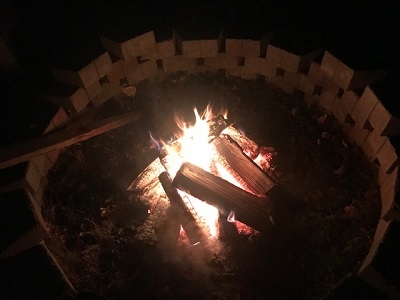 Photo Credit: Cheryl Hansen |
In the evening, Chef Masuko, Mr. Sato (the consulate’s driver), and I were lucky enough to stay at the home of Cheryl and her 96-year-old mother. That night we gathered in their field and kept warm by the campfire despite the below-freezing temperatures. With a s’more in my left hand and a glass of whiskey cut with hot water and a bit of sugar in my right, there was no end to the delightful conversation. They said that deer often wander through their farmland, as do moose and cougars sometimes. The next morning, as a small token of gratitude for the warm hospitality we had received, Chef Masuko prepared delicious omelets which were truly works of art.
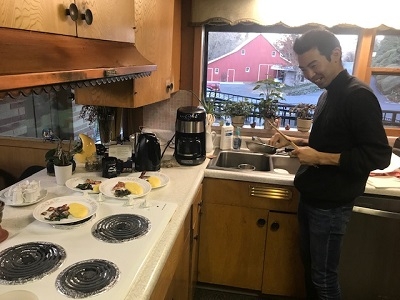 Photo Credit: Cheryl Hansen |
On Main Street in Walla Walla there are many beautiful bars – many more than one would expect for a city of its size – where one can enjoy wines and cheeses. Additionally, many of the wineries outside the city have established wine bars within their retail space. Guests were gathered in these spaces for tastings and to talk about this year’s wines. As we drove by, we saw a sign for one of the winemakers that provided wine for our summer reception, L’Ecole No 41, and decided to stop by for a visit. We were delighted to see Constance Savage, who attended the reception to promote their wines, and I was lucky enough to receive a discount on wine I purchased to serve at the Official Residence. Like drinking sake, when tasting multiple wines, I find it best to begin with the one of the highest quality. Otherwise, as you sample each wine and gradually begin to feel its effects, you may become less capable of discerning just what’s what.
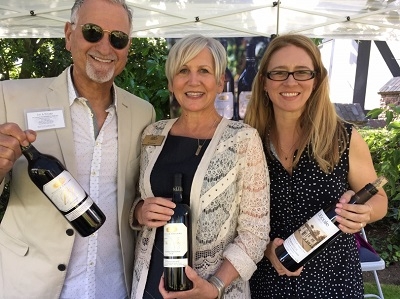 Photo Taken during Consulate reception in June 2019: (left to right) Jay Soloff and Kristina of DeLille Cellars, Constance Savage of L’Ecole No. 41 |
Though Walla Walla is a bit far from Seattle, it has much to offer. I found all the people there to be both hardworking and easygoing. It was a wonderful and welcoming city. I recommend everyone to pay a visit there.
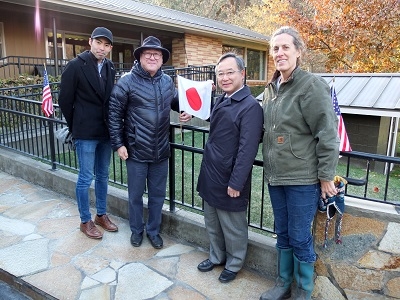 (Left to right) Chef Masuko, Mr. Sato, me, and Cheryl |
